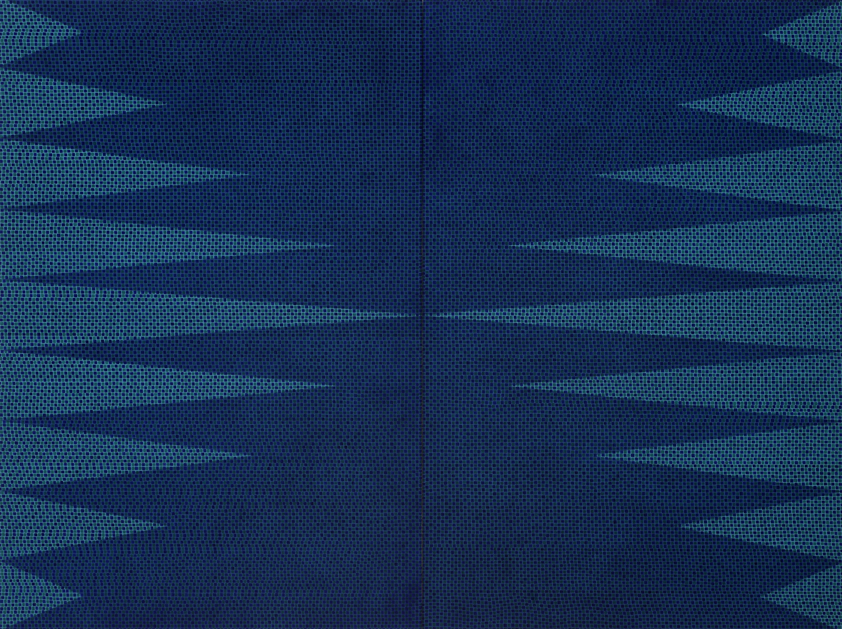
Below Sea Level # 1
, 2007Oil paint, pigment and medium on linen
3 panels, 130 cm x 270 cm
Helga Groves describes her paintings as abstract explorations of geophysical realms. While her previous work was often prompted by specific sites, more recently she has used generic topoi as her source and increasingly these allude to geophysical processes themselves. In this move from the particular to the general, from effect to cause, Groves’ longstanding interest in water and her paintings’ meticulous surfaces have remained constant.
Here, in six multi-panel paintings and a series of drawings it’s clear these allusions to geophysical realms are but a starting point for work that is as invested in the processes of mark-making and observation as it is in the discipline that used to be called natural history. A slight change in the method of paint application—now in squares of alternating colour meshed as a weave across the picture plane—and some shifts in palette are key. Groves’ pixels of colour and variations in the grid that seems to hold them together set up a perceptual play that suggests dissolution, suspension, and sedimentation.
All these processes describe water’s effects on landmass, both above ground and below; they also imply a temporal dimension that is ancient, in its geological aspect, and very brief in its optical unfolding on the canvas. It is as if Groves’ little squares of luminescence work like dust particles bouncing light, and as they shimmer in an undulating grid, she is able to suggest a mote’s downwards dance through liquid depths. At the same time, this vibrancy helps destabilize figure/ground relationships, the contours of which appear to alternate in the time of their viewing. Look for instance at the jagged line that features in a number of the paintings here. In Edge to Edge (2006-07) does it describe a row of stalagmites or stalactites, or indeed a shifting landmass? And in Groundwater (2007) can we properly speak of a line at all or is it instead an edge, the abutment of two areas of colour?
The two versions of Below Sea Level (both 2007) achieve very different effects. In the first, a three-panel arrangement, there is a top/bottom pull; in the second it runs sideways. The two are identically-sized landscape formats yet thanks to this pull, their size and format feel quite different in the viewing. (Groves thinks of this opposition in terms of the difference between marine concavities and the undulations of the sea floor.) In both paintings the “weave” holding the points of colour is strong and marked with subtle irregularities. What remains unclear is whether the paintings’ sense of undulation is the result of these irregularities or of colour dynamics.
Groves’ paintings, with their optical dazzle, their scrims and meshes, seek the same kind of viewing engagement the artist gives her own subject matter, exemplified in her drawings; here multiple graphite views of rock samples, rotated as if to suggest a different view at every moment. Ancient, and in Groves’ hands, ever-changing, these depicted rocks echo the twinned temporality of the paintings. In shifting her focus from the particular to the general, Groves has retained her keen observational sense, and by looking to geophysical processes for her inspiration, her work’s engagement with time—the momentary flash of water’s dazzle, the epochal transformation of landmass—continues to evolve.
– Ingrid Periz
Artist’s profile







